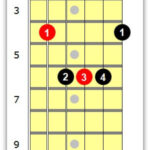Effects pedals, often referred to as stompboxes or simply Pedals Guitar, are electronic devices that guitarists and bassists use to modify the sound of their instruments. Designed to be operated by foot, these units sit conveniently on the floor or a pedalboard, allowing for seamless engagement and disengagement during a performance. A typical effects pedal is dedicated to a single effect, though some advanced pedals offer multiple effects or more complex signal processing.
What are Guitar Effects Pedals?
At their most basic, pedals guitar feature a footswitch for activation, one to three knobs (potentiometers) for adjusting parameters like effect level, gain, or tone, and an LED indicator showing whether the effect is active. More sophisticated pedals can include multiple footswitches for effect selection or tap tempo, a wider array of knobs and switches for deep parameter tweaking, and even alphanumeric displays to show settings or effect names. By connecting several pedals in series, musicians create an effects chain, or signal chain, which is fundamental to crafting a personalized and unique sound.
Popular Types of Guitar Pedals
The sequence and type of pedals guitar in a signal chain are critical in defining a guitarist’s signature tone. Among the most ubiquitous is the distortion pedal or overdrive pedal. These pedals introduce harmonic distortion, ranging from a subtle warmth to aggressive crunch, essential for rock, blues, and metal genres. Beyond gain-based effects, a vast landscape of pedals exists to shape sound in myriad ways.
The wah-wah pedal, controlled by foot movement, creates a sweeping filter effect, altering the tone in a vocal-like manner. Fuzz pedals deliver a heavily saturated, thick distortion, often associated with vintage rock sounds. Delay pedals repeat the input signal, producing echoes that can range from short slap-back to long, ambient washes. Flanger and phaser pedals create swirling, modulated sounds by subtly shifting the phase of the audio signal. Reverb pedals simulate the acoustic reflections of different spaces, adding depth and spaciousness. Chorus pedals thicken the sound by adding slightly detuned and delayed copies of the signal, creating a shimmering effect. Compression pedals even out the dynamics of the signal, making quiet parts louder and loud parts quieter, leading to a more consistent and punchy tone. Looper pedals allow musicians to record and playback phrases in real-time, enabling layered performances and creative soundscapes. For precise tonal sculpting, many guitarists rely on EQ pedals to boost or cut specific frequencies.
Optimizing Your Pedal Signal Chain
The order in which pedals guitar are connected significantly impacts the final sound. A general guideline for signal chain arrangement is to place dynamics processors like compression pedals, and filter effects such as wah pedals, and gain-based pedals like overdrive pedals early in the chain. Modulation effects (chorus, flanger, phaser) typically follow in the middle, while time-based effects (delay, echo, reverb) are usually positioned towards the end.
When using numerous pedals, unwanted noise can accumulate. To combat this, a noise gate or noise suppressor pedal can be implemented at the beginning or end of the chain to reduce hum and hiss, ensuring a cleaner overall sound.
With the extensive array of brands and effects pedals guitar available, players have virtually limitless possibilities to explore and define their unique sonic identity.

